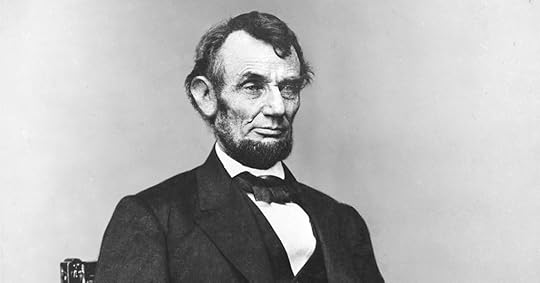Bathroom Readers' Institute's Blog, page 66
February 18, 2017
Memorable Facts About Forgettable Presidents
On President’s Day, the focus always seems to center on the major, important, and let’s face it, “best” presidents, such as George Washington and Abraham Lincoln. But there have been more than 40 other presidents—so here’s a look at some of the more obscure ones.
William Henry Harrison
William Henry Harrison didn’t do much of anything noteworthy during his term of office—it was only a month long, because he spent most of it dying of pneumonia (contracted after delivering an extremely long inaugural address in freezing temperatures without wearing a coat). Harrison died just over 30 days into his presidency. That wasn’t enough time for him to move his wife into the White House. It was, however, enough time for him to make sure his pet goat was all set up to graze on the White House lawn.
Rutherford B. Hayes
Rutherford B. Hayes became president in 1876 after the most controversial election of the 19th century—he won the Electoral College but lost the popular vote to Samuel Tilden. Nevertheless, while opposition to Hayes in the U.S. was strong, he was (and continues to be) beloved…in Paraguay. Hayes took office in 1877, right after the end of the Triple Alliance War, a conflict that devastated large swaths of South America. Argentina attempted to claim a big part of the tiny nation of Paraguay, who objected, and took their land dispute to the U.S. government to decide. (The U.N. was decades away from its creation.) The decision fell on President Hayes, who granted Paraguay the right to keep the land. The Paraguayan town of Villa Hayes was named in his honor.
William Howard Taft
William Howard Taft is remembered as the heaviest man to ever serve as president, once famously getting stuck in the White House bathtub. But after he left office in 1913, Taft lost more than 150 pounds. Another post-presidential achievement: He fulfilled his lifelong ambition of becoming Chief Justice of the Supreme Court. He’s the only ex-president to move on to that job.
Grover Cleveland
Grover Cleveland is the only president to serve two terms non-consecutively (1885-1889, 1893-1897) and the only one who had a bionic jaw. In 1893, Cleveland discovered a lump on his palate, and a doctor diagnosed it as a cancerous tumor. He was wary about news of the president having cancer or needing surgery getting out and causing a panic, so Cleveland had secret surgery onboard a friend’s yacht. Doctors removed a big part of Cleveland’s jaw and replaced it with an artificial one made of rubber.
The post Memorable Facts About Forgettable Presidents appeared first on Trivia Books and Facts | Uncle John's Bathroom Reader.
February 17, 2017
Michael Jordan Died in 2015
Undeniable: That Michael Jordan (he turns 54 today) is among the best, if not the best, professional basketball player of all time. What’s a bit more debatable: the veracity of these crazy urban legends about His Airness.
 “The Flu Game” Was Really “The Food Poisoning Game”
“The Flu Game” Was Really “The Food Poisoning Game”Perhaps the greatest game in Jordan’s career, which was already full of great games, was Game 5 of the NBA Finals. Jordan put up a huge 38 points for the Chicago Bulls against the Utah Jazz…all the more impressive because he had the flu at the time. However, according to former Chicago Bulls trainer Tim Grover, Jordan didn’t have the flu at all—he was poisoned! While resting up before the game at a Utah hotel the night before the game, Jordan ordered a late night pizza…and five guys delivered it. While that seems like it’s just a bunch of people who capitalized on the opportunity to meet Michael Jordan, Grover thinks it was a conspiracy among local Jazz fans to sideline Jordan. He says the pizza was tainted with either some bad cheese or mold in the crust.
He Was Forced to Retire
In 1993, Jordan shocked the sports world when at the height of his NBA career—he’d just led the Bulls to three straight championships—he announced he was retiring to fulfill his lifelong dream…of playing baseball. Jordan was signed by the Chicago White Sox organization and played in a few minor league games, but it didn’t work out and he was back in the NBA in two years. But rumor has it that it was all a conspiracy and a cover-up. Jordan had actually been caught by the league gambling on games, and they really gave him a two year “suspension.” In the documentary Jordan Rides the Bus, former teammate (and current Golden State Warriors coach) Steve Kerr pokes some major holes in the theory—particularly how the NBA would be foolish to purposely send away its most popular player of all time.
He’s Dead
In 2015, an obscure news site called Cronica MX broke a major story: NBA legend Michael Jordan had died of a sudden heart attack at the age of 52. While the article had an accompanying tribute video which made the story look legitimate (including footage of ESPN anchor Rich Eisen memorializing colleague Stuart Scott edited to look like he was talking about Jordan), it was riddled with errors, such as Jordan dying at his home in “North Caroline.” (For what it’s worth, Michael Jordan is alive and well.)
The post Michael Jordan Died in 2015 appeared first on Trivia Books and Facts | Uncle John's Bathroom Reader.
February 14, 2017
Wedding Superstitions

If we were Modern Bride magazine, we’d probably call these “wedding traditions” rather than superstitions. But think about it—most of them were started by people who believed in evil spirits and witches and talismans.
Bridal Veil
The veil has served a number of purposes throughout history, including: 1) protecting the bride from the “evil eye;” 2) protecting her from jealous spinsters (who might also be witches); and 3) protecting the groom, his family, and other wedding guests from the bride’s psychic powers—just in case she has any.
Wedding Kiss
A toned-down but direct throwback to the days when the couple was required to consummate their marriage in the presence of several witnesses, to insure that the consummation actually took place.
Bride’s Garter and Bouquet of Flowers
Originally the groomsmen fought with each other to see who would get the bride’s garter, which was supposed to bring good luck to the person who possessed it. But the Catholic Church frowned on the rowdy practice, and it was eventually replaced by a milder custom: the bride throwing a bouquet of flowers to her bridesmaids. Today the customs exist side by side.
Wedding Rings
One of the oldest wedding practices. Ancient Egyptians, Romans, and Greeks all exchanged rings during their wedding ceremonies. Because a circle is a round, unending shape, it came to symbolize the ideal love that was supposed to come from marriage: it flowed from one person to the other and back again, forever. The ring has always been worn on the left hand—and was originally worn on the thumb. It was later moved to the index finger and then to the middle finger, and eventually ended up on the third, or “medical,” finger. Reason: The third finger was believed to lead straight to the heart, via a single nerve.
Honeymoon
This European tradition dates back hundreds of years and gets its name from the fact that newlyweds were expected to drink honey (believed to be an aphrodisiac) during the period of one full cycle of the moon (about a month).
Throwing Rice or Confetti
Originally a fertility ritual. Wedding guests threw wheat at the bride only, in the hope that she would bear children the same way that wheat produced bread.
Wedding Cake
Guests originally gave “bride-cakes” to a just-married woman to encourage fertility.
June Wedding
It was customary for Romans to marry in June to honor the queen of the gods, Juno—who was also the goddess of women. They hoped to win her favor to make the marriage last, and make childbirth easier.
Carrying the Bride Over the Threshold
Romans thought good and evil spirits hung around the entrance of a home. They also believed that if you walked into your house left foot first, the evil spirits won. So to be sure the bride—whom Romans figured was “in a highly emotional state and very apt to be careless”—didn’t accidentally step into her new home with the wrong foot, the groom just picked her up and carried her.
Reception Speech
In pre-Christian Rome, newlyweds hired an “official joker” to tell dirty stories to guests during the reception. The Romans believed that “unclean” thoughts in the minds of guests turned the attention of vengeful gods away from the newlyweds, which helped protect them from evil.
Decorating the Wedding Car
In medieval France, when a couple was unpopular, people derided them publicly by banging on pots, kettles, etc. This was a charivari, or “rough serenade.” In America it became a shivaree, and people got the treatment from friends. This gave way to a new custom—trying to keep a couple from consummating their marriage by making noise at their window. When newlyweds began leaving weddings by car, the only way to harass them was to deface the vehicle.
The post Wedding Superstitions appeared first on Trivia Books and Facts | Uncle John's Bathroom Reader.
A Very Strange Valentine’s Day
You could go the old flowers-and-candy route, of course…or you could go for a gift as unique as the one who love.
You Bug Me, Valentine!
Each year, the Bronx Zoo in New York City holds a Valentine’s Day tradition. Anybody with just $10 and a good intention can purchase the “naming rights” to one of its many Madagascar hissing cockroaches. While the roaches stay at the zoo, they are officially named after your one true love. (Naming the roach costs $10, but it’s $50 if you want to throw in a box of chocolates and a plush roach toy.)
Hot Wings for Cold Hearts
It’s probably not an exaggeration to stay that a lot of guys out there will wind up at Hooter’s on Valentine’s Day. The restaurant chain is famous for its chicken wings, as well as its female waitstaff in skimpy uniforms. This year, Hooter’s is holding a promotion on Valentine’s Day in which the broken-hearted get 10 free chicken wings. But first, they have to buy an order of 10 wings. Oh, and they also have to bring in a picture of the love that did them wrong…and send it through a paper shredder. This is the second annual “Shred Your Ex” event—last year 25,000 ex pics got shredded in exchange for free chicken.
Stupid, Cupid
Thousands of people will receive a silvery, shiny, heart-shaped Mylar balloon on Valentine’s Day. It’s a statement of love and affection in lieu of flowers—they’re usually cheaper and last a little longer, too. They’re also dangerous. Arizona Public Service, an electric company in Phoenix, recently launched a public awareness campaign about the very real threat to public safety and comfort posed by balloons. A representative of APS said that in 2016, the company attributed 81 power outages affecting 55,000 people—caused by loose Mylar balloons. What happens: a Mylar balloon comes in contact with a power line, generating a quick shot of blue lightning over the balloon, causing it to both catch fire and knock out the power line.
The post A Very Strange Valentine’s Day appeared first on Trivia Books and Facts | Uncle John's Bathroom Reader.
February 13, 2017
An Adorable Cure for Diabetes

The key to treating to metabolic disease that affects more than 20 million Americans may lie inside the stomach of the duck-billed platypus.
There are already many unique things about the platypus, the furry little creatures native to Australia. For example, it’s semi-aquatic, meaning it spends some of its time on land, and some in the water. It’s also one of only two mammals in the world that lays eggs. They’re also outfitted with a unique defense against predators: spurs on their hind heels that emit venom when the animal feels threatened. Add one more thing to the list of platypus quirks: an abundance of a hormone called glucagon-like peptide-1, or GLP-1. It’s one of the ingredients in that foot-poison.
This chemical is found in humans, where the body doles it out in quick doses during the digestion process. It helps the hormone insulin process carbohydrates, thus regulating blood sugar. Diabetics can’t make insulin, but they still produce GLP-1.
Scientists from two Australian institutions, the University of Adelaide and Flinders University, have discovered that GLP-1 is also present in the gut of the platypus. The difference is that there’s is a long-lasting form, as opposed to the short-acting human form. For decades scientists have known that the platypus must have had some kind of metabolism-regulating mechanism in place, as the animal does not have a functional stomach. They’re just now figuring out that the GLP-1 helps a platypus digest and process food, and that they also use it as a way to fend off enemies—it drastically lowers their predators’ blood sugar.
In addition to all of that just being really weird and interesting, this discovery of long-acting GLP-1 in the platypus could lead to major changes in the way diabetes is treatment. If the GLP-1 can be extracted from a platypus and not lose its effectiveness, diabetics may have a new tool at their disposal in their tricky war against blood sugar regulation—and a way to stave off resulting complications of consistently high blood sugar such as blindness and amputation.
The post An Adorable Cure for Diabetes appeared first on Trivia Books and Facts | Uncle John's Bathroom Reader.
February 10, 2017
Happy Birthday, Mr. Lincoln

Some amazing facts about one of America’s most towering and complex figures, Abraham Lincoln, born on this day in 1809.
He Was a Really Good Wrestler
Wrestling is an ancient sport, and it’s remained popular throughout the history of Western civilization, including the 1800s…when Lincoln was an outstanding grappler. He reportedly won approximately 300 matches and lost just once. He even talked a big talk before and after his bouts, much like a present-day WWE wrestler would. Lincoln once told a crowd of wrestling spectators, “I’m the big buck of this lick. If any of you want to try it, come on and whet your horns.” For all of this and more, Lincoln was named to the National Wrestling Hall of Fame.
He Was a Dirty Politician
Honest Abe is almost universally regarded as America’s finest and most dignified president. But he was a human being, after all, and a politician…so he’s not quite the saint history has made him out to be. As part of his campaign to secure the Republican nomination for president in 1860, Lincoln bought a German-language newspaper. Why? So it would run a bunch of pro-Lincoln editorials and news items and secure the large German immigrant voting bloc. And just before the quadrennial Republican National Convention, Lincoln’s team secretly met with Republican delegates and promised them government jobs—including cabinet positions—in exchange for their support of Lincoln in his quest for the nomination. As one final move to cinch it for Lincoln, his campaign printed and distributed 5,000 fake tickets to the RNC to overwhelm the convention hall with his supporters.
He Had a Complicated View of Slavery
Lincoln presided over the U.S. during the Civil War, fought in large part over the issue of slavery—he banned it with the Emancipation Proclamation, but the Confederacy fought for the right to enslave people kidnapped and shipped from Africa. While Lincoln the man definitely believed that slavery was inhumane, immoral, and wrong, Lincoln the politician wasn’t quite sure what to do with slaves after they were freed. The Proclamation didn’t grant citizenship to African-Americans, for example. In and 1854 anti-slavery speech, he even advocated sending freed slaves “back to Africa.”
He Created the Secret Service
The Secret Service is best known as the security force that protects the President of the United States. But it was initially formed in 1865 to fight and shut down the massive counterfeiting of money that was happening in the country both during and after the Civil War. The legislation to create the agency was signed by President Lincoln on April 14, 1865. Sadly, and ironically, the unprotected president was fatally shot by John Wilkes Booth as he watched a play in Washington, D.C. that same day. In 1901—after the assassinations of President James Garfield and President William McKinley—the Secret Service was tasked with protecting the Commander-in-Chief.
The post Happy Birthday, Mr. Lincoln appeared first on Trivia Books and Facts | Uncle John's Bathroom Reader.
Grammy Awards: They Won Best New Artist?

The Grammy Award for Best New Artist, like all the other Grammys, is decided by a vote of music industry professionals. They often have made the wrong choice, in that the winner faded into obscurity while the runners-up have become music superstars. Grammy voters can’t predict the future of course, but if they could have, these acts probably would have been named Best New Artist.
2013
The pop-rock band fun. (that’s how it’s spelled—”fun.”) won the award based on huge hits like “We Are Young” and “Some Nights.” That’s a stable pick by Grammy voters…except that fun. split up very soon after they won the award. Fellow nominees Alabama Shakes and Frank Ocean went on to keep making critically acclaimed music.
2008
Taylor Swift is probably the biggest star in music today, selling out stadiums and selling millions upon millions of albums. She lost the Best New Artist award to neo-soul singer Amy Winehouse, who tragically was unable to record another album—she died in 2010.
1992
One-hit wonder Marc Cohn (“Walking in Memphis”) won the award over future superstars Seal and Boyz II Men.
1981
Extra-mellow singer-songwriter Christopher Cross pulled off a rare sweep of the Grammys top four categories. It was not expected to happen, but Cross won Album of the Year (over Frank Sinatra, Pink Floyd, Barbra Streisand, and Billy Joel), Song of the Year for “Sailing” (over Sinatra’s “Theme from New York, New York,” Bette Midler’s “The Rose,” and the theme song from Fame), Record of the Year, and Best New Artist. Cross’s soft rock fell out of favor by 1983, the year of his last top 10 hit. Fellow Best New Artist nominee the Pretenders are in the Rock and Roll Hall of Fame, however.
1979
The nominees included some of the biggest rock bands of all time: Elvis Costello and the Attractions, the Cars, and Toto. But none of them won. Disco hitmakers A Taste of Honey (“Boogie Oogie Oogie”) did. And they broke up in 1982, just barely outlasting disco.
1971
The Carpenters had a ton of hit songs in the ‘70s…but not as many as the guy they beat out for Best New Artist: Elton John.
The post Grammy Awards: They Won Best New Artist? appeared first on Trivia Books and Facts | Uncle John's Bathroom Reader.
February 7, 2017
The Robots are Coming!

In preparation for the inevitable day when robots rise up and take over the world, you may want to familiarize yourself with these recent advancements in robot technology.
Clonebots
Scientists at Cornell University have built a small robot that can make copies of itself. The robot is made of several 10-centimeter-wide modules, each of which is fitted with electromagnets (so they can be attached to other modules) and a computerized replication program. Using the program, the robot can take single modules—the same ones of which it is made—and stack them, constructing a clone of itself. Scientists hope to use the technology to make self-repairing robots.
Poobots
Experts at the University of the West of England in Bristol have developed a robot that creates its own power supply: it attracts flies, then eats them, then turns them into electricity. But there’s a catch. The “EcoBot II” uses a reserve of human excrement to attract the flies. The robot digests the bugs in eight fuel cells. It uses the bacteria from the excrement to break down the sugars in the flies, releasing electrons that create an electric current. The scientists’ goal is to eventually make the EcoBot II predatory, finding and devouring flies on its own whenever it senses that its energy reserves are low. Until then, however, it has to be manually fed fistfuls of dead flies to supplement those attracted by the poop.
Jockbots
In May 2005, teams of scholars from colleges around the world met at the Georgia Institute of Technology for the RoboCup U.S. Open, a series of five robotic competitions. The aim of the contest was to develop a team of robots that by the year 2050 will be technologically advanced enough to play soccer against a human team. Among the events: five-inch-tall robots play soccer with a golf ball; robot dogs play soccer; and teams of humans play soccer against robots while riding Segway power scooters.
Jockeybots
The most popular spectator sport in the United Arab Emirates is camel racing. The traditional choice for camel jockeys has always been children—they’re small and lightweight. Until now. When human rights groups actively started to condemn the practice as a form of slavery, U.A.E. Interior Minister Sheikh Khalifa bin Zayed al-Nahayan found an alternative: he hired several private high-tech labs to create a generation of robot jockeys. The tiny, human looking robots are smaller and lighter than child jockeys and respond to commands via a remote control system mounted on the camel.
Ballbots
The University of Uppsala, Sweden, has developed a new security system and burglar deterrent: a ten-pound robot in the shape of a 20-inch black ball. Equipped with radar and infrared sensors, when it senses an intruder, it follows one of many preprogrammed courses of action: it can dial the police, sound an alarm, repeatedly take the burglar’s picture, or pursue the thief at up to 20 mph—faster than a human being. It even gives chase over water, mud, and ice.
Docbot
A robot used at the University of California–San Francisco Medical Center for delivering medicine to patients’ rooms ran amok in June 2005. Rather than going to the hospital pharmacy to pick up medications as programmed, Waldo the Robot sped past the pharmacy at a high speed and zoomed wildly into the hospital’s cancer ward. Waldo barged into an examination room where a doctor was administering radiation treatment to a cancer patient and then he finally stopped…for good. He suddenly wouldn’t move, leave the room, or respond to commands. The patient, however, ran out of the room, screaming in terror.
The post The Robots are Coming! appeared first on Trivia Books and Facts | Uncle John's Bathroom Reader.
Read Your Favorite Movie (If You Can Recognize It)

Before home video was cheap and widely available, a book that retold the events of a movie was one of the few ways to experience a favorite film after the projector stopped rolling. The problem with “novelizations” was that the writers hired to churn them out were often given a very early version of the script. They had to fill in the blanks, or add story elements, and were even given free reign to do so.
Grease…
Novelization writer Ron De Christoforo took a lot of liberties with his adaptation. For one, the book is told in first-person from the point of view of minor character Sonny (Michael Tucci in the film). And he includes a bunch of “summer nights” with Danny and Sandy that are only alluded to in the movie. (The events of the movie start about 50 pages into the novel.) There’s also one scene where the teenage characters reflect on the plane crash that killed Buddy Holly. De Christoforo includes the movie’s musical numbers—by restating them as prose dialogue. For “Beauty School Dropout,” Frenchy just tells her friends about a weird dream she had: “Teen Angel really rubbed it in. I mean he said “Beauty School dropout, Beauty School dropout” over and over again.”
Batman Forever…
Remember in Batman Forever when the Riddler, portrayed by Jim Carrey, builds and wears a giant robotic muscle suit and terrorized Gotham City with it? No? That’s probably because that didn’t happen in the movie. But that scene is in the novelization of Batman Forever by Peter David.
Back to the Future…
Back to the Future was extensively rewritten between when it was first pitched to studios and when it filmed. Novelization writer George Gipe clearly got an early version of the screenplay to write his book with, because the book Back to the Future bears very little resemblance to the movie Back to the Future. Instead of the amiable and clever hero as portrayed by Michael J. Fox, Marty McFly is dumb as well as mean: He puts down his family, friends, and even his best friend, Doc Brown. (Marty also swears a lot and uses out-of-date expressions like “Eureka!”) As for Doc Brown, in the movie he invents time travel to advance science. In the book, he does it do get back at his enemies.
The Goonies…
At the end of the 1985 adventure movie The Goonies, the thought-to-be-scary Sloth (John Matuszak) forms a bond with the Goonie named Chunk (Jeff Cohen). The novelization by James Kahn provides plot details that happen after the events of the movie. For example, Chunk’s family legally adopts Sloth. They also throw him a bar mitzvah.
The post Read Your Favorite Movie (If You Can Recognize It) appeared first on Trivia Books and Facts | Uncle John's Bathroom Reader.
February 6, 2017
The Films of Ronald Reagan

Today’s the birthday of 40th American president and one-time actor Ronald Reagan. While he was usually relegated to “B” movies, Reagan appeared in classics like Knute Rockne: All American. He also starred in a lot of duds—hey, an actor’s gotta eat.
Louisa (1950)
Reagan plays Hal, a young man who worried and sickened that his Grandma Louisa…is dating. (Grandma was played by the not-that-old-at-64 Spring Byington; her boyfriend was Edmund Gwenn, best known as Santa Claus in Miracle on 34th Street.) Things get even worse for poor Hal when his boss tries to start romancing his grandma, too.
The Winning Team (1952)
The future President Reagan plays Grover Cleveland Alexander, the famed baseball pitcher named after 19th century president Grover Cleveland.
She’s Working Her Way Through College (1952)
A pretty risqué movie for 1952, it’s about an exotic dancer (Virginia Mayo) who quits that line of work to go to college. Reagan plays a stuffy English professor who ultimately loosens up to defend the stripper when the college’s board of trustees want to kick her out of school.
Hellcats of the Navy (1957)
Reagan plays a brave naval submarine commander who has to both find a dangerous mine in the waters off of Japan and navigate a love triangle with a diver and a nurse lieutenant. The film was most notable because co-starring as the nurse was Nancy Davis, whom Reagan would marry shortly thereafter.
The Young Doctors (1961)
One of the last movies he made before he went into politics (and became governor of California) was this soapy, zany hospital set and Fredric March playing rival doctors, a nurse who develops a tumor in her knee, a life-saving blood transfusion for a baby, and a small appearance by Dick Clark as an intern.
Bedtime for Bonzo (1951)
It’s the most mentioned movie of Reagan’s film years, likely because it was a wacky comedy in which the future president of the United States co-starred with a chimpanzee. The actual plot of the movie: A psychology professor (Reagan) and a friend (Diana Lynn) attempt to be “parents” of a chimp, in an effort to prove if “nature” or “nurture” is the dominant force in child development. Reagan himself claimed to have not actually seen the movie—the top box office hit of 1951—until 1984.
The post The Films of Ronald Reagan appeared first on Trivia Books and Facts | Uncle John's Bathroom Reader.














